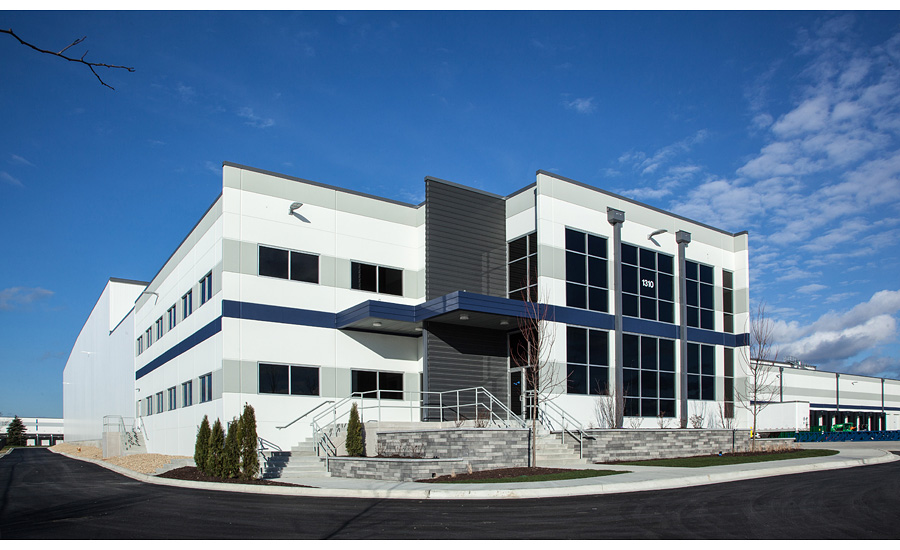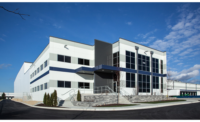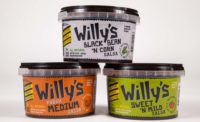In anticipation of West Liberty Foods opening the doors to its new cold storage facility, Liberty Cold, June 30, Marina Mayer, editor-in-chief of Refrigerated & Frozen Foods magazine, sat down with Tim Cox, vice president of Liberty Cold, Bolingbrook, Ill., to learn more about this new state-of-the-art facility that was built with food safety and security as top priority.
Refrigerated & Frozen Foods: Why build this cold storage facility? What is its purpose?
Tim Cox: The primary driver was to create a Midwest consolidation center for our plants. We now have two facilities in Iowa, in addition to the two facilities in Illinois. This facility allows us to collect all of that freight into Bolingbrook and create freight synergies between Iowa and Illinois. With our inventory in Bolingbrook, we look to bring in third-party inventory to build freight synergies hitting the lower 48 states.
The second opportunity was diversification. Liberty Cold allows West Liberty Foods to further diversify its portfolio. My passion is 3PL warehousing and logistics. My goal is to grow this division into a multi-facility 3PL that customers want to join us for our service and the value we can bring their organizations.
I sincerely appreciate Ed Garrett, president and CEO of West Liberty Foods, West Liberty, Iowa, for giving me this opportunity. I’m truly passionate about it. It is a great feeling to do what you love to do. We’ve seen other cold storages do it well, and we want to try and take it to the next level.
Refrigerated & Frozen Foods: What services does it provide, i.e., HPP tolling, quick-freezing technology, enhanced load security, etc.?
Cox: The first and foremost thing is really just the idea of freight consolidation in logistics services. We believe, I believe, in my career working for small medium-sized businesses that there is an opportunity to help small medium-sized businesses with their freight spend. And, when you create that synergy of bringing a bunch of small companies together, you can bring return to people and help them with their distribution costs. And, that could go anywhere from freight consolidation on LTL to even doing managed services where we’re executing their freight spend for them, from freight bids to building routing guides to executing the plan. It doesn’t have to ship out of Liberty Cold. It could be out of their plant in Texas, and we would handle the entire process, so they can focus on their core competencies.
And then, in addition to that, we are a licensed broker, so even if someone has a load and says, “Hey, I’m struggling to find a carrier for one of our customers,” they can come to us and say, “Hey, can you help me get a load from Chicago to California?” So, you have all these different ways that freight can pass through this company. You envision on a map and you really start to look at, how do I create efficiencies where customer A is coming out of California to Chicago and we’re going to California? How do we marry up? It’s like a putting together a puzzle toward freight efficiencies.
As far as the warehouse, it starts with building a safe and secure warehouse that customers feel comfortable that their assets are protected and treated with care. Our facility is 100% fenced and gated. We have over 90 cameras on-site monitoring inside and outside the building. We utilize vertical dock levelers to maintain seal integrity from inside the building as opposed to going outside to break seals. The facility has 29 dock doors with a 63-foot temperature-controlled dock. Our primary warehouses have penthouse refrigeration, so there are no ammonia lines inside the room to help prevent ammonia releases. The warehouse is truly state-of-the-art, and we believe that is increasingly important as regulations advance in food safety.
In addition to that, we’ve built the 5,000-square-foot USDA processing room to help customers with production needs. This room could handle a variety of processes, such as boxing, defrosting, kitting or cartoning. Or, a customer could come along with their own process that wanted to partner with Liberty Cold and run production out of that room. We really don’t know where that room is going to take us yet. We just know that there’s a need for those services for the small medium-sized business.
Then, obviously, HPP tolling is a huge investment. Our parent company, West Liberty Foods, is definitely focused on food safety. High-pressure processing (HPP) is a growth market, and there really aren’t a lot of companies doing it in Chicago, so we thought it would be a nice fit for Liberty Cold to be able to offer tolling. So, those are really the key drivers of what we’re trying to do—cold storage warehousing, logistics, high-pressure pasteurization and then the processing room.
Refrigerated & Frozen Foods: Please describe the customer portal and how it works.
Cox: I’ve been a buyer of cold storage services for years. And, one of the things that you’re always dealing with in cold storage is that you have a lot of people in your company looking for information. It could be inventory information. It could be bill of ladings, shipping information. It could be the cold storage invoicing cost. It could be logistics asking how our drivers are being treated, how fast are we turning trucks? You’re constantly reaching out to these cold storage providers like, “Hey, I need this, and I need that.” I just thought, “How do we take all that data, build a data warehouse and give our customers a front end where they can go look up anything from what’s my invoice last month to how long did it take this order to ship to when did the driver arrive? When did they leave? What was the driver’s name?”
With this customer portal, anyone can research product coming in and out, where it went. It’s really a portal where you get all this information.
We utilize a software to build the interface, and the idea is that people can log in and get their information. A lot of cold storages have these portals, but I want to go deeper in the data they provide and customize solutions for customers. I believe access to data is critical in 3PL organizations, and I am passionate to deliver this data when the customer needs it.
It started out for us in logistics, and it’s evolving. We’re building it out to be a broader reach, so when a customer is doing business with us, whether it be HPP tolling or just warehousing, they can get information. It’s very graphical, intuitive, front end. We hope to release the first version in June or July.
Refrigerated & Frozen Foods: When will this facility be fully operational?
Cox: The facility opened in February. Our primary focus was handling the West Liberty Foods inventory. Since then, we have brought on 12 clients and the number keeps growing. Our goal is to fill the building this calendar year and look into expansion in 2017. We have the ability to double our 20,000-pallet capacity with the land we purchased.
Refrigerated & Frozen Foods: What benefits does this cold storage facility bring West Liberty Foods?
Cox: Directly, the biggest thing is freight efficiencies. I think it’s that ability to consolidate freight. I think it helps supplement HPP capacity because that’s a growing service that West Liberty Foods is offering customers, so we have the capacity to assist there. And, then I think it’s a diversification to diversify the business.
Refrigerated & Frozen Foods: What can other cold food processors learn from this experience, where a cold food processor acquires a facility and turns it into a cold storage facility?
Cox: This is a Greenfield site, so we didn’t convert it to anything. We took a dirt field and built this building. There’s a lot of food processors out there that have built their own distribution centers, a couple of them here in Chicago. As far as what you can learn, it just amazes me how far the technology has come in the building process. We were extremely fortunate to partner with United Insulated Structures Corp. (UISC), Berkeley, Ill., to build our facility. Larry Lantero, owner of UISC, is extremely knowledgeable and does an unbelievable job working with clients to balance technology and cost. His company built the facility on time and on budget. This was not something I was expecting when the first shovel went into the ground.
I don’t know that I would have anything to teach other processors, per se, but just that building a Greenfield site allows you to really raise the bar on food safety and food security, which is what we’re trying to do. There’s nothing here that’s cutting-edge that no one else can’t do. It all boils down to building a facility that allows you to service your accounts and take care of the product. What drives a good 3PL is the people first and the building second.


